JuzaPhoto utilizza cookies tecnici e cookies di terze parti per ottimizzare la navigazione e per rendere possibile il funzionamento della maggior parte delle pagine; ad esempio, è necessario l'utilizzo dei cookie per registarsi e fare il login (
maggiori informazioni).
Proseguendo nella navigazione confermi di aver letto e accettato i Termini di utilizzo e Privacy e preso visione delle opzioni per la gestione dei cookie.Puoi gestire in qualsiasi momento le tue preferenze cookie dalla pagina
Preferenze Cookie, raggiugibile da qualsiasi pagina del sito tramite il link a fondo pagina, o direttamente tramite da qui:
Milky Way and Baobabs
Milky Way and Baobabs, testo e foto by
Juza. Pubblicato il 08 Giugno 2012; 0 risposte, 5659 visite.
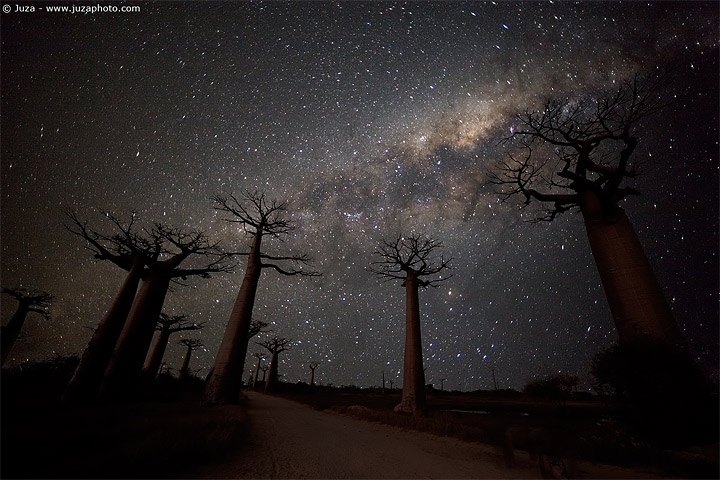
Canon EOS 1Ds Mark III, Sigma 20mm f/1.8 EX DG, 25" f/1.8, iso 3200, tripod. Morondava, Madagascar.
Ever since I visited the Baobab Avenue for the first time, in a sunny morning, I thought how fascinating would it be to photograph the Baobabs at night, with the Milky Way in the sky. In Madagascar there is very little light pollution, so when there are no clouds, you can take awesome photos of the night sky and the Milky Way. In this trip I managed for the first time to get good photographic results from the Sigma 20mm f/1.8 - this lens has very poor image quality...it is super soft, it has tons of optic aberrations, but for night photos it allows to get fascinating results, even though the image quality is poor.
Some days ago we came back to the Baobab Avenue near sunset. I hoped to take the night photo in this occasion, but we could not stay for hours waiting for darkness, so I realized I had to use an alternative strategy :-) The sky was clear, and there was a visible separation from the blue of the sky and the shapes of the Baobab: I thought that it would have been possible to crop out the baobabs from the photo and to make a composite with a photo of the Milky Way taken in another occasion. I carefully composed the photo and I toke this shot:
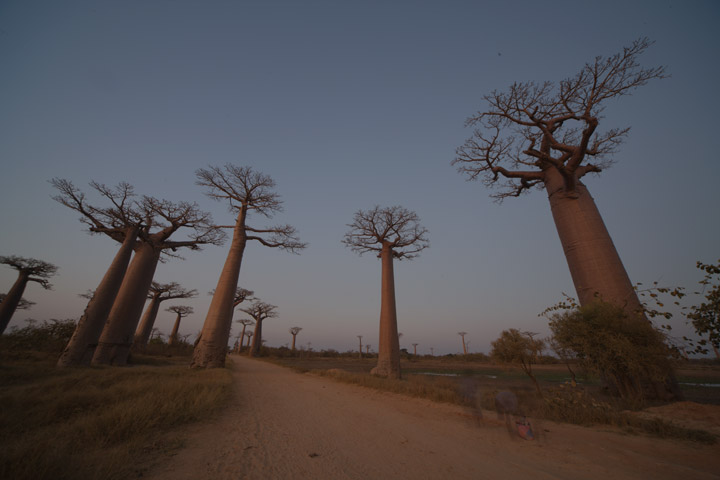
(by the way the "ghost" in the lower right side is my travelmate Emanuele Castronovo :-) )
Few days after, in another place far away from civilization and light pollution, I toke some photos of the Milky Way, shooting with the Sigma 20mm f/1.8 wide open (f/1.8), at ISO 3200 on Canon 1DsIII. I used ISO 3200 to keep the shutter speed around 30"; a longer exposure would have rendered the star as stripes rater than points. The 1DsIII is not the most noise-free camera - I wish I had a Nikon D3 or D700 - but it is still acceptable at ISO 3200, and with some noise reduction in Photoshop the result was good.
Making the composite was a bit more difficult than expected. This is the result after making the first selection (I used the Magic Wand Tool) and decreasing the brightness, to simulate night:
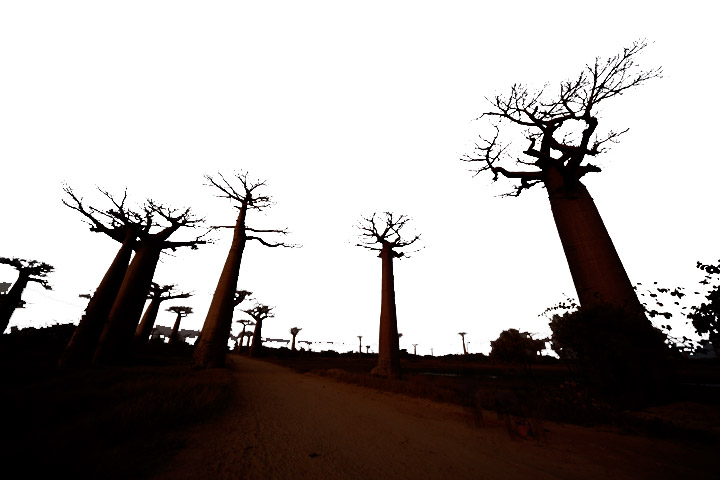
I had to work a lot on the selection to make it realistic; I copied the Baobab image and I pasted it above the Milky Way photo, and I worked again on the selection borders, to avoid halos and artifacts. I post processed separately the two images: I cropped slightly the Milky Way photo, and I increased the contrast to show well every little star; instead, I decreased the brightness and the saturation on the Baobab image to make it looking like a night photo. When I was satisfied by the results, I merged the two images to create the Milky Way and Baobabs photo :-)
Even though I am not a big fan of composites, I really liked the result - the Milky Way is always a great background, and if you want to try, you can put nearly every silhouette into foreground..enjoy! :-)
Some final thoughts. I have been asked how the noise of the 1DsIII at ISO 3200 looks like, for this kind of photos...these are a couple of crops, before and after post processing:
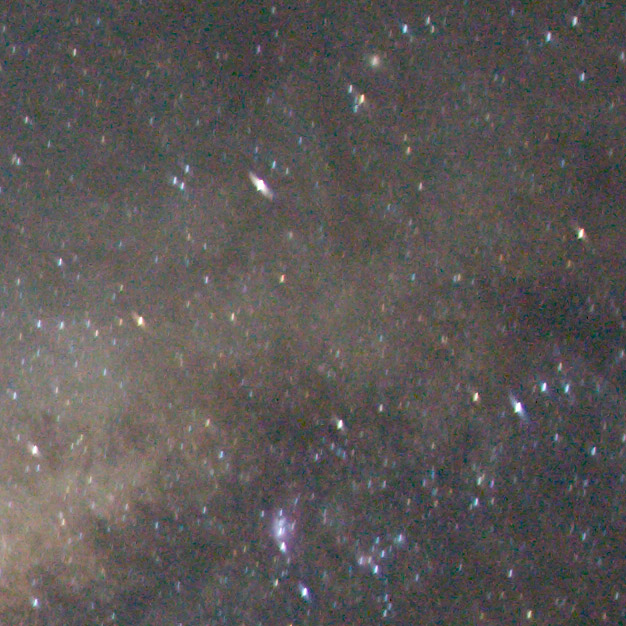
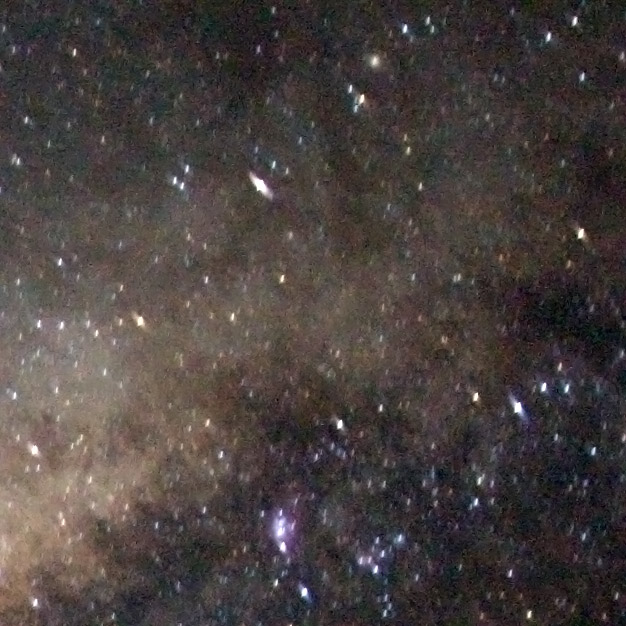
Considering that at this size it is like looking a poster-sized print, I'd say it is not bad!
Sometimes I read discussions about the "ethical" of Photoshop and post-processing...as I have already said in other occasion, I think that there is nothing wrong in post-processing a photo as you like; what is important is to be honest about it, not pretending it is "untouched, out of the camera" if you have post processed it. This composite photo is a quite extreme example of post processing, but I like the result, and I am proud to have in my gallery :-)
(the photos of the Milky Way and Three Peaks of Lavaredo, and the Milky Way and Palms, instead, are not composites - they are single shots post processed with just some noise reduction and contrast enhancement)
Risposte e commenti
Che cosa ne pensi di questo articolo?
Vuoi dire la tua, fare domande all'autore o semplicemente fare i complimenti per un articolo che ti ha colpito particolarmente? Per partecipare iscriviti a JuzaPhoto, è semplice e gratuito!
Non solo: iscrivendoti potrai creare una tua pagina personale, pubblicare foto, ricevere commenti, partecipare alle discussioni e sfruttare tutte le funzionalità di JuzaPhoto. Con oltre 253000 iscritti, c'è spazio per tutti, dal principiante al professionista.



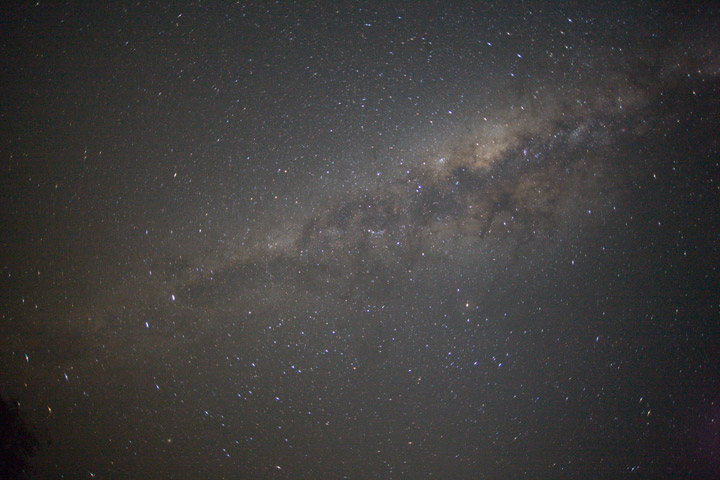



 JuzaPhoto contiene link affiliati Amazon ed Ebay e riceve una commissione in caso di acquisto attraverso link affiliati.
JuzaPhoto contiene link affiliati Amazon ed Ebay e riceve una commissione in caso di acquisto attraverso link affiliati.